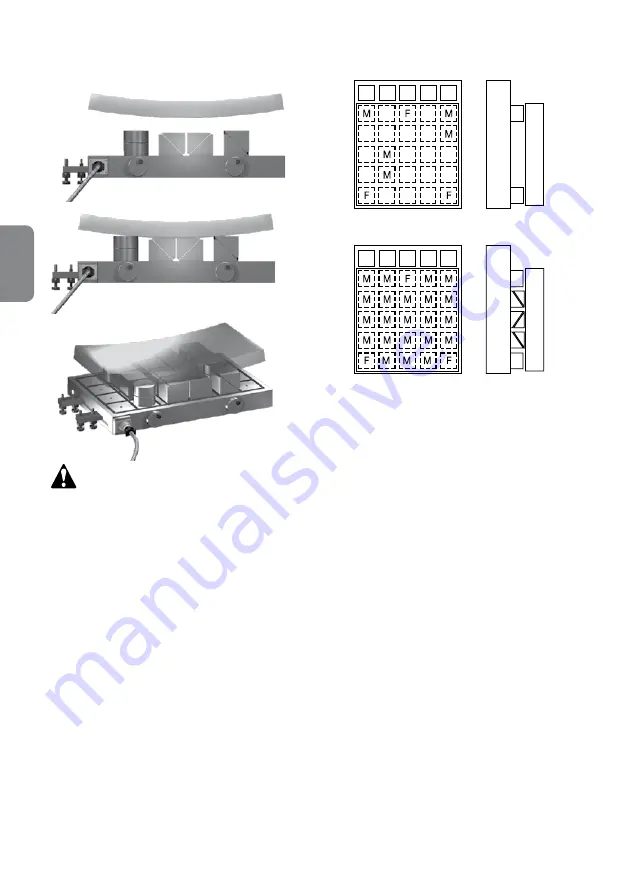
64
Instruction and maintenance manual
ENGLISH
ing force applied to the part is directly related to
the number of available extensions.
ATTENTION! The holes on the poles are
provided to simplify the positioning of accesso-
ries like polar extensions (see page 59, section 5).
It is useful to remember that these accessories
act as conductors and do not need therefore to
be excessively clamped. To accelerate the posi-
tioning of these accessories, holes with a limited
thread are provided. These holes are designed
to be used for the operations described above
only. A tight and repeated clamping may wear the
threads of the holes on the poles.
INCORRECT
POSITION
CORRECT
POSITION
Use the polar extensions (for milling operations) to
verify that all the surface of the part to machine is
covered with the polar extensions.
The clamping force is directly proportional to the
surface in contact with the part to clamp (and thus
to the number of polar extensions).
The greater the number and the higher the clamp-
ing force
Verify that the polar extensions are correctly po-
sitioned, checking also the magnetic balancing
(number of poles with SOUTH polarity = NORTH
polarity).
In other words, if it is not possible to use the whole
surface of the part for magnetic clamping, it is pos-
sible to use polar extensions to verify that the exten-
sions present meet the following conditions:
a) The number of extensions with North (N) polarity
must be equivalent to the number of extensions
with South (S) polarity. It is generally sufficient
to arrange the extensions so that they face one
another, as this configuration ensures a correct
alternation between north and south.
b) The polar extensions that are in contact with the
part should be placed, when possible, along the
whole length of the part. This ensures that the
clamping force is able to effectively offset the cut-
ting force.















































